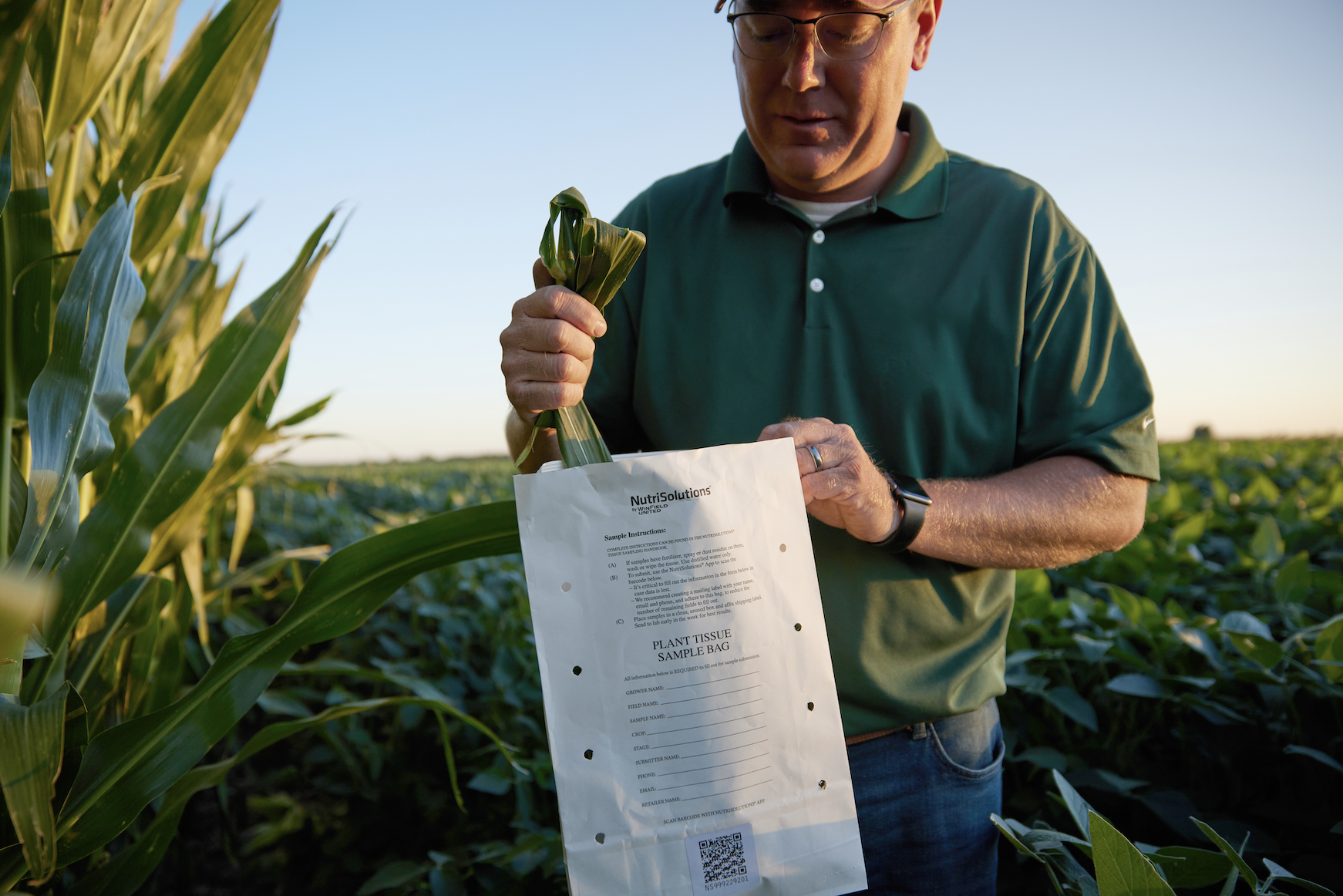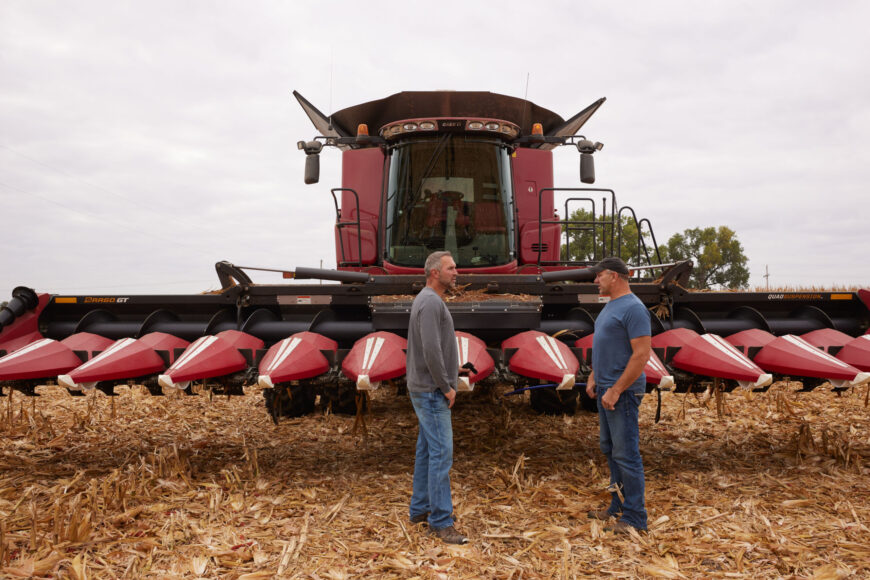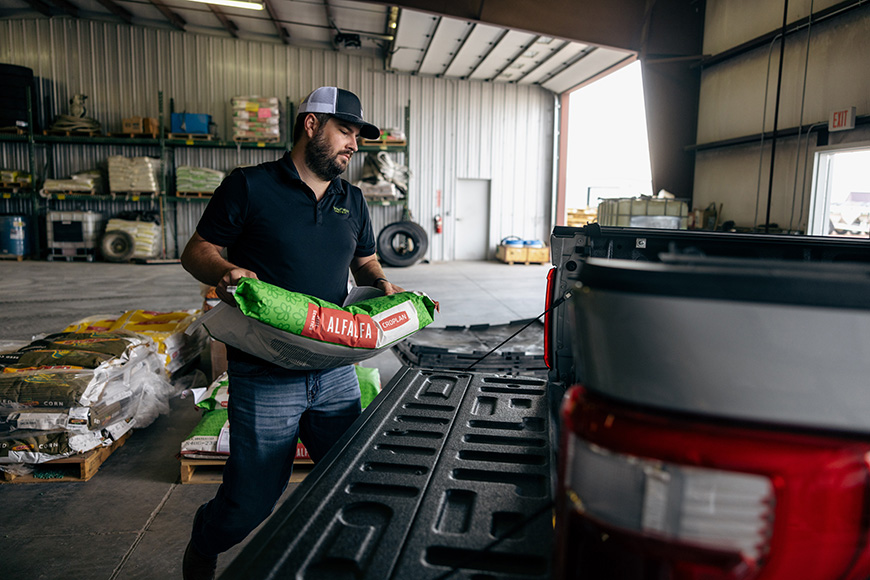3.3
Highest forage quality potential in the alfalfa lineup. Ideal for Northern growing regions or high elevations.
Plant Characteristics
-
Not Recommended
Excellent
-
Yield
-
Persistence Index
-
Feed Quality
-
Disease Resistance
-
Insect Resistance
-
Nematode Resistance
4
Excellent yield or forage quality potential with the HarvXtra® alfalfa trait and good disease package.
Plant Characteristics
-
Not Recommended
Excellent
-
Yield
-
Persistence Index
-
Feed Quality
-
Disease Resistance
-
Insect Resistance
-
Nematode Resistance
4.2
Highest resistance rating to Aphanomyces root rot and resistant to multi-race anthracnose.
Plant Characteristics
-
Not Recommended
Excellent
-
Yield
-
Persistence Index
-
Feed Quality
-
Disease Resistance
-
Insect Resistance
-
Nematode Resistance
4.4
Exceptional root and plant health with AA disease resistance package to support highest yield and quality potential.
Plant Characteristics
-
Not Recommended
Excellent
-
Yield
-
Persistence Index
-
Feed Quality
-
Disease Resistance
-
Insect Resistance
-
Nematode Resistance
6
HarvXtra® alfalfa harvest flexibility in a semidormant variety to maximize yield and quality potential.
Plant Characteristics
-
Not Recommended
Excellent
-
Yield
-
Persistence Index
-
Feed Quality
-
Disease Resistance
-
Insect Resistance
-
Nematode Resistance
7.9
Exceptional nondormant variety provides improved yield and forage quality potential with the HarvXtra® alfalfa trait.
Plant Characteristics
-
Not Recommended
Excellent
-
Yield
-
Persistence Index
-
Feed Quality
-
Disease Resistance
-
Insect Resistance
-
Nematode Resistance
2.9
Best suited for Northern regions where 1 or 2 cuttings of hay will be harvested mechanically followed by grazing.
Plant Characteristics
-
Not Recommended
Excellent
-
Yield
-
Persistence Index
-
Feed Quality
-
Disease Resistance
-
Insect Resistance
-
Nematode Resistance
3.2
High forage quality potential ideal for baled hay or haylage harvest.
Plant Characteristics
-
Not Recommended
Excellent
-
Yield
-
Persistence Index
-
Feed Quality
-
Disease Resistance
-
Insect Resistance
-
Nematode Resistance
3.9
PLH resistance provides improved yield potential, high-quality feed and stand persistence.
Plant Characteristics
-
Not Recommended
Excellent
-
Yield
-
Persistence Index
-
Feed Quality
-
Disease Resistance
-
Insect Resistance
-
Nematode Resistance
4.4
Highest resistance rating to Aphanomyces root rot and resistant to multi-race anthracnose.
Plant Characteristics
-
Not Recommended
Excellent
-
Yield
-
Persistence Index
-
Feed Quality
-
Disease Resistance
-
Insect Resistance
-
Nematode Resistance
4
Great soil disease resistance to help improve root and plant health.
Plant Characteristics
-
Not Recommended
Excellent
-
Yield
-
Persistence Index
-
Feed Quality
-
Disease Resistance
-
Insect Resistance
-
Nematode Resistance
4.3
Perform well across multiple geographies and growing conditions with a good disease-resistance package.
Plant Characteristics
-
Not Recommended
Excellent
-
Yield
-
Persistence Index
-
Feed Quality
-
Disease Resistance
-
Insect Resistance
-
Nematode Resistance
4.8
Exceptional performance in tough soils with high saline conditions.
Plant Characteristics
-
Not Recommended
Excellent
-
Yield
-
Persistence Index
-
Feed Quality
-
Disease Resistance
-
Insect Resistance
-
Nematode Resistance
4.9
Developed to perform in fields heavily infested with nematodes; excellent salt tolerance ratings.
Plant Characteristics
-
Not Recommended
Excellent
-
Yield
-
Persistence Index
-
Feed Quality
-
Disease Resistance
-
Insect Resistance
-
Nematode Resistance
5
Well-rounded pest resistance package for wide-range adaptability from East to West.
Plant Characteristics
-
Not Recommended
Excellent
-
Yield
-
Persistence Index
-
Feed Quality
-
Disease Resistance
-
Insect Resistance
-
Nematode Resistance
6
Semidormant variety with high resistance to spotted alfalfa, pea aphid and stem nematode.
Plant Characteristics
-
Not Recommended
Excellent
-
Yield
-
Persistence Index
-
Feed Quality
-
Disease Resistance
-
Insect Resistance
-
Nematode Resistance
8.5
Exceptional nondormant variety with very high yield potential and excellent leaf retention.
Plant Characteristics
-
Not Recommended
Excellent
-
Yield
-
Persistence Index
-
Feed Quality
-
Disease Resistance
-
Insect Resistance
-
Nematode Resistance
2
Recessed crown provides excellent durability for grazing or high-traffic fields.
Plant Characteristics
-
Not Recommended
Excellent
-
Yield
-
Persistence Index
-
Feed Quality
-
Disease Resistance
-
Insect Resistance
-
Nematode Resistance
3
Premium multifoliate blend that works well in a 3- to 4-cut hay or haylage management system.
Plant Characteristics
-
Not Recommended
Excellent
-
Yield
-
Persistence Index
-
Feed Quality
-
Disease Resistance
-
Insect Resistance
-
Nematode Resistance
3.4
Excellent choice for producers in northern growing with AA disease resistance.
Plant Characteristics
-
Not Recommended
Excellent
-
Yield
-
Persistence Index
-
Feed Quality
-
Disease Resistance
-
Insect Resistance
-
Nematode Resistance
4
Excellent resistance to potato leafhopper, allowing for reduced-spray or no-spray options.
Plant Characteristics
-
Not Recommended
Excellent
-
Yield
-
Persistence Index
-
Feed Quality
-
Disease Resistance
-
Insect Resistance
-
Nematode Resistance
4.4
Includes AA disease resistance providing exceptional yield potential.
Plant Characteristics
-
Not Recommended
Excellent
-
Yield
-
Persistence Index
-
Feed Quality
-
Disease Resistance
-
Insect Resistance
-
Nematode Resistance
4.8
Outstanding AA disease resistance combined with maximum yield potential.
Plant Characteristics
-
Not Recommended
Excellent
-
Yield
-
Persistence Index
-
Feed Quality
-
Disease Resistance
-
Insect Resistance
-
Nematode Resistance
4.9
Very early spring growth, fast regrowth and late fall growth for optimal yield potential.
Plant Characteristics
-
Not Recommended
Excellent
-
Yield
-
Persistence Index
-
Feed Quality
-
Disease Resistance
-
Insect Resistance
-
Nematode Resistance
5
Developed for Western regions with problematic soils, including high-salinity soils.
Plant Characteristics
-
Not Recommended
Excellent
-
Yield
-
Persistence Index
-
Feed Quality
-
Disease Resistance
-
Insect Resistance
-
Nematode Resistance
6
Excellent conventional variety that is dark green with very high multifoliate expression and good leaf retention.
Plant Characteristics
-
Not Recommended
Excellent
-
Yield
-
Persistence Index
-
Feed Quality
-
Disease Resistance
-
Insect Resistance
-
Nematode Resistance
8.4
Exceptional yield potential with strong stand persistence and very fast recovery after cutting.
Plant Characteristics
-
Not Recommended
Excellent
-
Yield
-
Persistence Index
-
Feed Quality
-
Disease Resistance
-
Insect Resistance
-
Nematode Resistance
9
High-yield-potential, nondormant conventional variety with an excellent pest-resistance package.
Plant Characteristics
-
Not Recommended
Excellent
-
Yield
-
Persistence Index
-
Feed Quality
-
Disease Resistance
-
Insect Resistance
-
Nematode Resistance





















